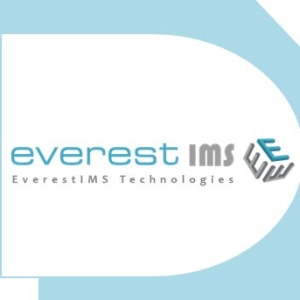What is our primary use case?
We use Infraon IMS to monitor devices and links. It will provide information including downtime, uptime, what devices are connected to the router, memory utilization including how much and at which location, etc. All of this information is available with the report, which has fine granularity.
It is running on a Linux system.
How has it helped my organization?
The reporting capabilities are good. We have to manually configure reports based on what data we require. For example, it can show the downtime for uptime for a device. Once we configure the profile for each report, we can download it.
We use Infraon to automatically trigger processes to help resolve issues when they are detected. For example, it will automatically raise a ticket and send an email to our ISP when it detects that a link is down.
When a process is triggered automatically, we run one of the pre-configured scripts. We have not created any of the scripts ourselves but rather, only use the ones that are provided. These scripts are important because we use them for generating reports and emailing alerts, which are also used for auditing purposes.
For example, our IT department has been improved because Infraon automatically creates reports that show our site uptime and downtime. We can see which site has more bandwidth utilization, link utilization, and link problems. It will show us what other devices are in the environment, which ones we need to replace, and how many sessions are being created.
This solution assists us with our billing because we have many critical locations, and these need to have one hundred percent uptime, every month of the year. We generate reports monthly, quarterly, and yearly, which we then submit to management to cite the total uptime. Based on this, the billing is done.
With respect to the learning curve, this tool is easy to learn because there is a lot of training material included. I suggest that the entire team learn to use it, rather than just one person, because it will make the tool more effective for the organization.
What is most valuable?
The most valuable feature is alerting. We get email alerts when a link is down that tell us which device is having a problem.
The granularity of the reporting works well for us.
What needs improvement?
The GUI is in need of improvement. It is not drag-and-drop or easy to use. It is needed to configure the parameters for SNMP but using the interface is a time-consuming task. Some manual configuration is required. It also needs to be more granular.
Improvements to the GUI should be made such that a payment is able to configure all of the email features.
For how long have I used the solution?
We have been working with Infraon IMS for three years.
What do I think about the stability of the solution?
Stability-wise, it's good and we have had no issues using this tool. We have not had any corrupt files or other problems.
What do I think about the scalability of the solution?
With respect to scalability, this product is good. We are able to scale the product according to what we need; however, in our organization, it is not much. We have not needed to scale the product beyond what we initially set up.
We have three or four people that work with the product and access it centrally. At the remote locations, we have perhaps 20 people that access it.
How are customer service and support?
My experience with Everest is that the support is very good. They have made suggestions about the best products for us to use and recommended options for us to easily adapt them.
I would rate the support a nine out of ten.
Which solution did I use previously and why did I switch?
Prior to Infraon, we used another solution but it was not as extensive.
How was the initial setup?
The initial setup was simple, although because it is a Linux-based tool, we needed help from Everest to do it. In one day, the deployment can be completed.
The installation will take perhaps five or six hours but after this, it needs to be configured using the GUI. The length of time it takes for configuration depends on your requirements, and what parameters you need.
What about the implementation team?
The vendor assisted us with the deployment.
What was our ROI?
We have definitely seen ROI since we first implemented Infraon, three years ago. It has given us clarity and helped us with compliance during audits.
What's my experience with pricing, setup cost, and licensing?
Licensing is calculated on a per-user basis. We have four users in our environment.
I would prefer if licensing was device-based, with unlimited administrators or users.
Which other solutions did I evaluate?
We evaluated other vendors prior to selecting Infraon. One of them was ManageEngine.
We chose the Everest tool because of its support for devices from many OEMs. Some other tools are used strictly for a specific OEM and some devices were not covered. Everest seemed to support everything that was available in the market.
What other advice do I have?
We have our system configured for location-based dashboards, as opposed to the role-based option.
My advice for anybody who is looking into implementing this tool is that it can be used easily, and the compatibility with other products is good, but it has to be carefully configured based on your requirements. That will give you the best opportunity to properly utilize it.
Overall, this is a good tool from my perspective. We use it very extensively and productively to overcome problems and understand issues such as link availability, bandwidth utilization, and the nature of our network traffic.
I would rate this solution a nine out of ten.
Which deployment model are you using for this solution?
On-premises
*Disclosure: PeerSpot contacted the reviewer to collect the review and to validate authenticity. The reviewer was referred by the vendor, but the review is not subject to editing or approval by the vendor.



